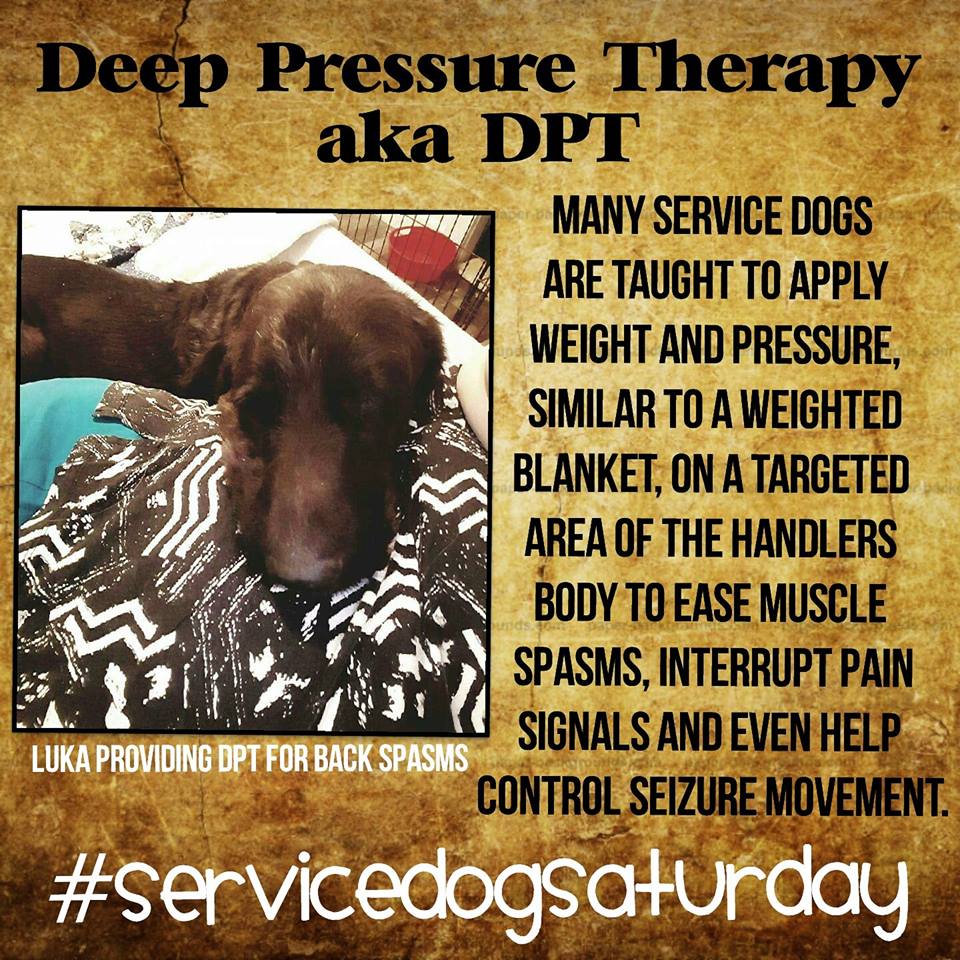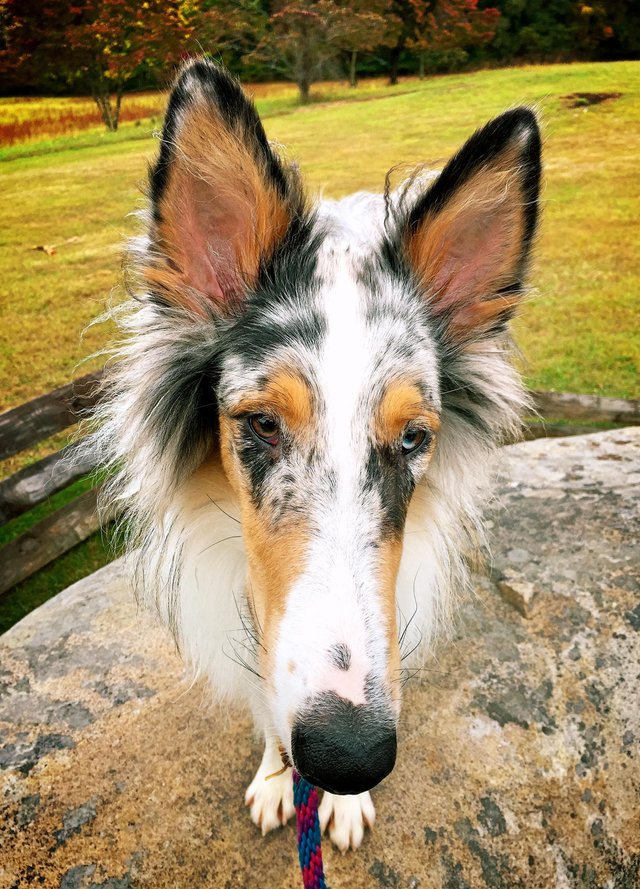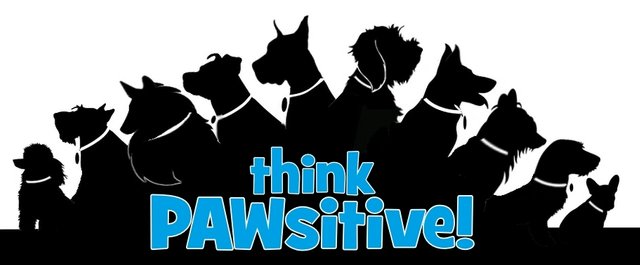SERVICE DOG SATURDAY WITH THINK PAWSITIVE PUP - TASKING SKILLS - PRESSURE THERAPY

WHAT IS PRESSURE THERAPY
Pressure Therapy is one of many helpful tasks a Service Dog can be trained to do to assist their handler with pain, spasms or light mobility issues. It breaks down differently depending on the individual handlers needs. Essentially, it involves a dog applying their body weight in different ways to help with various aspects of their handlers condition.
I see many handlers benefit from this task in so many ways. This can range from acting as a focus for grounding/anxiety to calming muscle spasms or support during seizure activity to learning to apply and shift their weight on specific acupressure points. In my case, my Service Dog in training, Gryphon, is learning 3 types of pressure therapy for assisting with my Fibromyalgia/MS symptoms and Anxiety response.

LPT - Light Pressure Therapy
The dog places a small amount of weight, usually with their foot, head or rear, onto their handler. This small weight is not generally enough to ease physical symptoms but can be very helpful during anxiety attacks, PTSD flashbacks or dissociation. They provide a focus for their handler to use as a grounding point which helps the handler avoid a full blown attack.
In this instance, the dog is taught to touch the handler with their paw or rest their head across the handlers lap when they notice early signs of distress like an increase in respiration, nervous or agitated behavior or any other cue the handler may have taught them to respond to. This task is not about the weight of the dog, but simply the act of interruption in most cases.

LUNA, a German Shepherd pup, is learning LPT with her Mom in one of my group classes
This behavior is taught in three stages.
- Decide WHEN the behavior is needed - when should the dog do this?
To count as a legal TASK for service work, the skill needs to be a trained response that can be replicated ON CUE - not a natural unshaped behavior.
This is one of the defining differences between Service Dogs and Emotional Support Animals (ESA) that naturally respond but are not trained. Emotional Support Animals provide their disabled handlers with companionship and comfort however as of 2011, ESAs are NOTcovered under current ADA laws which means they are NOT allowed public access to non-pet friendly places like stores, restaurants or similar locations. Only trained Service Dogs are protected under the Americans with Disabilities Act (1990).
Decide what cue/body language the dog should respond to - Breathing changes? Foot tapping? Hand clenching?
Decide how the dog should respond - for larger dogs, a head across the lap is often used but some dogs sit/stand on their handlers feet, put their paws onto their handler's lap and some small dogs will stand on their handler's chest. All of these are valid responses and it will vary depending on what helps the individual handler the most.
DPT - Deep Pressure Therapy
In this task, the dog places a substantial amount of weight onto their handler, often with large dogs this is at least half of their body. This is a targeted behavior (meaning the dog generally lays across a specific part of the body). The weight of the dog can ease muscle spasms, helps control body movements during seizures, stabilize tremors etc. It has also been paired with certain alerts in which the dog makes the handler remain still until the danger they are alerting to has passed (blood sugar dropping, heartbeat/blood pressure irregularities, vertigo).
Gryph is doing one version of DPT in this video. I had a rough day with muscle spasms and he places his legs and front half of his body over my legs/ hip and then his head over my ribs. Even when I told him he could get up ("Free"), he continued to lay with me. What just looks like a dog snuggling to most people can actually be a very helpful task. He weighs about 75lbs and was probably applying about 30lbs of that weight over my ribs and back, similar to a weighted blanket.
PPT: Pressure Point Therapy
This is a much more complex task we are still working on but essentially involves the dog being taught to target a particular part of the body or pressure point and stand on that point to stop spasms or relieve pain. They are taught to shift their weight for more or less pressure as needed. This involves the dog understanding several complex behaviors and being able to chain them together into one task.
- Foot Targeting - placing their foot on the spot/mark indicated
- Stay/Steady - to remain there until asked to move
- Weight Shift - understanding how to lean in or away as needed to increase or decrease the pressure being applied
So if a handler asks for their dog to provide PPT to their lower back, the dog could be taught to target specific points along the spine and apply pressure until asked to move to another point or move away. Yes, pretty much a canine massage! Not many dogs are currently trained in this but I think it will be very helpful to chronic pain sufferers with conditions such as Fibromyaglia, Lupus, MS or Arthritis.

http://www.top10homeremedies.com/news-facts/important-acupressure-points-back-pain-relief.html
HOW DO YOU EVEN START TRAINING A DOG TO HELP WITH THIS
Many times cost and long waiting lists (which can average 2-5 years in some cases) make it difficult for handlers to get a dog and they decide to begin training their own. While this is certainly allowed, it is a hard road if you aren't working with a good trainer. Less than 30% of dogs who start the journey to becoming a Service Dog succeed. It is physically and mentally taxing work and it takes a lot of patience, perseverance and good training to make it happen.
I have several resources available to help with the process.

https://www.facebook.com/groups/329574914180670/
I run a free group on FaceBook that offers training support on everything from Basic Obedience & Manners to Public Access and Tasking Skills.
It is based on a combination of Sue Ailsby's Training Levels (Canadian Service Dog Trainer), C.L.A.S.S (Canine Life and Social Skills), the AKC CGC series of tests and basic PA and tasking skill building.
It is an active working group so I do ask that people participate (there are no deadlines but you can post to the PRACTICE THREAD until you are ready to post the final behavior).
If you don't want to be part of an active group - here are the links just for more info:
SUE AILSBY'S TRAINING LEVELS
http://sue-eh.ca/page24/page26/styled/
APDT C.L.A.S.S (they offer certificates but you don't have to take any tests - you can just do the skills training)
https://mydoghasclass.com/students/
AKC CANINE GOOD CITIZEN
http://www.akc.org/dog-owners/training/canine-good-citizen/
I also offer training support locally (Southern WV/VA) with group classes, private sessions and boarding programs as well as offering an Online Classroom for eLearning.

http://www.thinkpawsitivepup.com